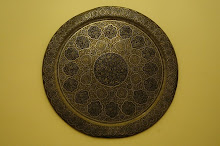
A trip to the antiques market yielded another unexpected find last week. There, I came across a book entitled Saudi Arabia: An Artist's View of the Past.
This hardcover book published in 1979 by Jeddah-born artist Safeya Binzagr features interesting sketches and paintings of traditional Saudi scenes.
Binzagr was compelled to capture and preserve images of old world Saudi Arabian life as the pace of sweeping cultural and technological change quickened in the latter half of the 20th century.
Her illustrations (a combination of oil paintings, watercolors, pastels, and etchings) capture the finer details of traditional Bedouin life. The writer of the book's preface commends Binzagr for having “done something commendable, for she has preserved these scenes from the ravages of time and oblivion.”
She reportedly took much of her material from old photographs which she found at such places as the Royal Geographical Society in London.
“It is important for Saudis to remember, and for the West to learn,” Safeya writes in her introduction. “This book will be a record for the new generation.”
A quick Internet search yielded a website for Binzagr’s gallery, which opened in Jedda in 2000, and where many of her works are displayed today.


























